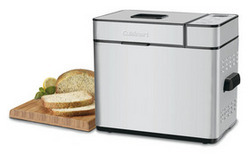I used to be at the age where everyone was getting married; I’m
now at the age where everyone is having babies.
Not having a child myself, I find the whole diaper/nursing/bottle scene
a little overwhelming. I have no idea
what a kid really needs. Luckily, I do
understand that most babies require a towel after being washed. For this reason, I’ve mostly stuck to buying
hooded towels for all my friends.
A few
years ago, Pottery Barn changed the material in their critter towels for the worse. They used to offer a chick (pink!), a
cow (blue!)
or a pig (green!) in their collection. The material was soft and absorbent. I got rave reviews from my new-parent friends,
especially if they also had a cheaper towel from Target or Babies R Us in their
closets for comparison. But when Pottery
Barn introduced their new critters (frogs, elephants, bunnies, other unidentifiable
creatures), the quality nose-dived.
I was actually rather upset because I loved giving the towels and the
thought of finding a new go-to gift was daunting.
I have
since found that their
gingham hooded towels are reasonable.
Still not the quality I come to expect from
Pottery Barn, but passable.
The added
bonus of these towels is that you can have the child’s name stitched on the
hood.
Unfortunately, the cost Pottery
Barn demands for such a service is ridiculous.
It is most certainly cheaper and easier to do it yourself!
Here
are two samples of towels I’ve given as gifts recently (NOTE: the names are not real –
they are nicknames or inside jokes between me, the parents, and their
friends. Please don’t think my friends
don’t know how to name their children).
Given the number of friends I have in their childbearing years, I expect
my practice time to increase and my designs to become more involved.
What do
you need to do this?
The ability to cross stitch.
If you don’t know how, don’t be too
frightened to try!
It’s really quite
simple.
Here’s a
short tutorial (link).
I personally don’t make the elegant knots
that professional cross-stitchers do .
My
mom taught me how to loop the thread to start and knot it at the end in a functional,
if not perfect, way.
No one sees the
back – don’t get too caught up in the details.
As long as the pattern looks correct on the front, I consider it good
work.
(
Perhaps a tip worthy of flames from
hardened crafters, but I’d hate to see someone give up because their knots aren’t
perfect, you know?)
Thread. True
story – it took me three orders from JoAnn Fabrics to get the right thread for
cross stitching. My mother taught me how
to cross stitch at a young age and yet, even knowing exactly what I wanted, I
still couldn’t order correctly. In my
defense, though, JoAnn’s website has two insanely similar items for sale and if
you don’t read carefully, you will order the wrong thing. Twice.
You will need
FLOSS (link).
I ordered a multi-pack of colors.
Waste Canvas.
Cross-stitch
is done on threaded canvas, which is fine if you want to incorporate that
material into your project.
For the
towels, I wanted to stitch directly on the fabric but needed a cross-stitch guide.
Waste canvas was made for this (
link)!
Patterns.
A
quick trip to Barnes and Noble’s magazine section lead me to several cross
stitch magazines full of patterns (
link,
link).
They
have pictures, alphabets, full projects and so much more.
All are color coded but you are free to
improvise however you see fit.
Don’t see
anything you like?
Design your own
pattern!
Other miscellaneous items: needles, pins, graph
paper, good lighting, tweezers, water
Once
you have all your materials, you need to pick a pattern. I’ll explain the green towel since it was
very straightforward. I found an
alphabet style I liked in a cross-stitch magazine. On the graph paper, I wrote out the word “Spartacus”
in the letter style by x-ing where each stitch should go. I made sure two squares were placed in
between each letter so it was spaced evenly.
I then counted how many squares I needed from start to finish, cut the
waste canvas slightly larger than necessary, and pinned it to the center of the
towel’s hood. I carefully marked where
the stitches would begin and where they would end with pencil.
From
here, I followed my pattern with stitches of green thread. It is not more complicated than that!
When
you’ve finished stitching, the fun part begins!
You now have stitches holding onto the waste canvas and the towel
material. You want to remove the waste
canvas and leave the stitches on the towel.
Take
the towel to the sink and wet the entire stitched area with plenty of
water. The waste canvas is quite stiff
when dry but, upon wetting, will become very pliable.
Start
with the shorter strands. Place your
tweezers at the end of one strand. Pull straight so that one piece of waste canvas is
pulled through the stitches and out.
This is just like pulling a tablecloth out from under dishes on a
table. Pull with authority but straight
so you don’t disrupt your stitches. It
is easier to start with the shorter waste canvas strands and work right to left
until you’ve pulled each one. Now begin
with the strands running in the perpendicular direction.
Once
they are all pulled out, you are left with your design!






